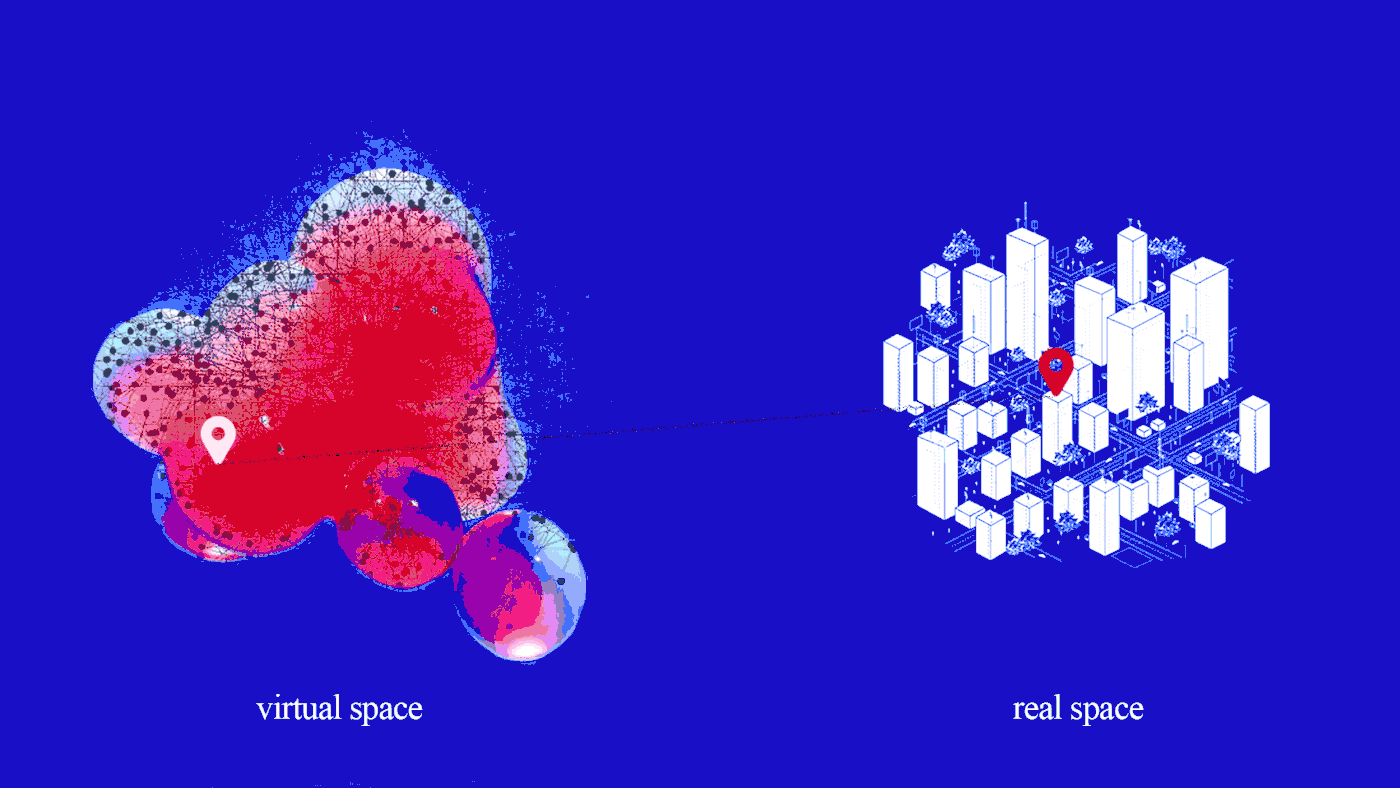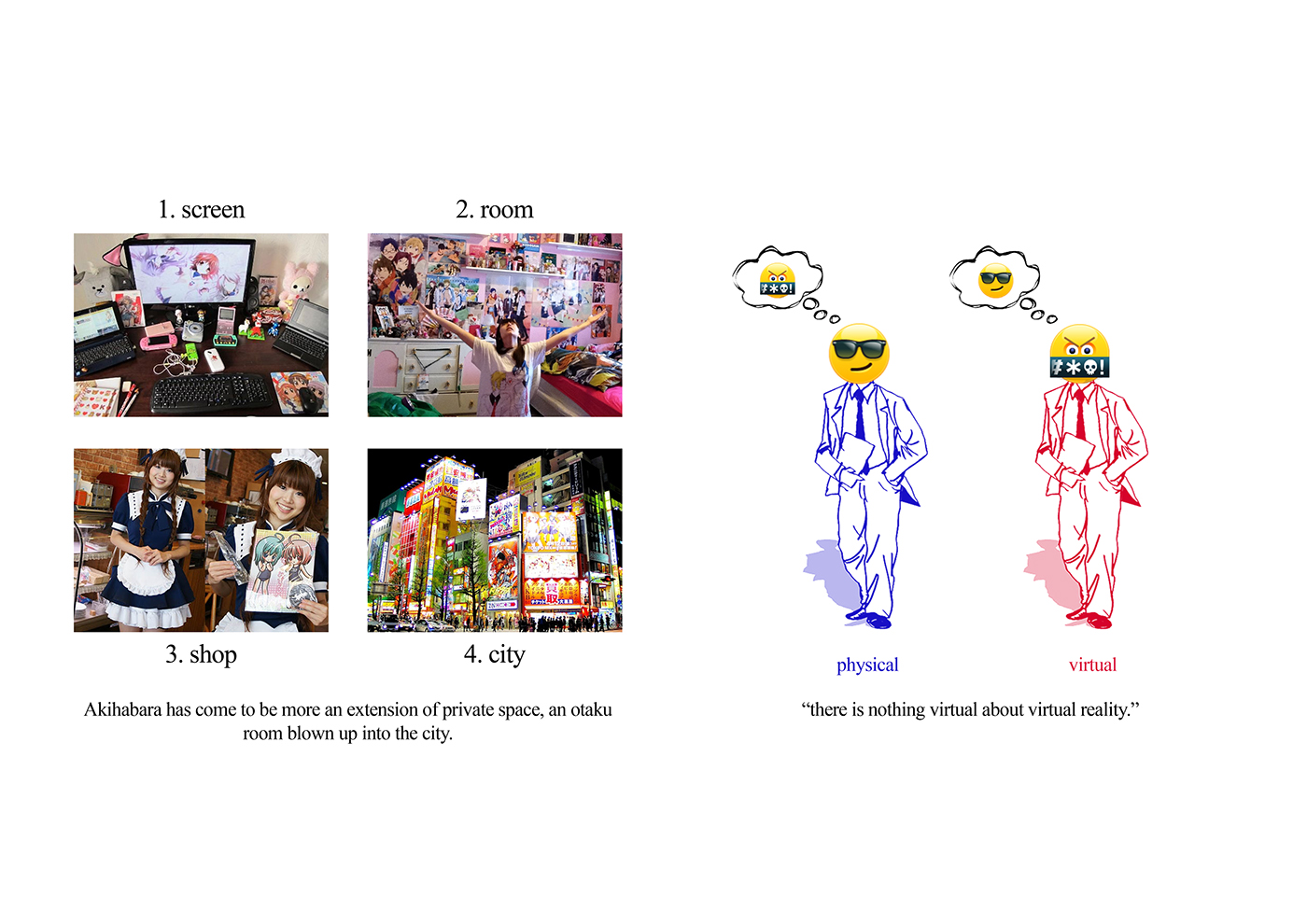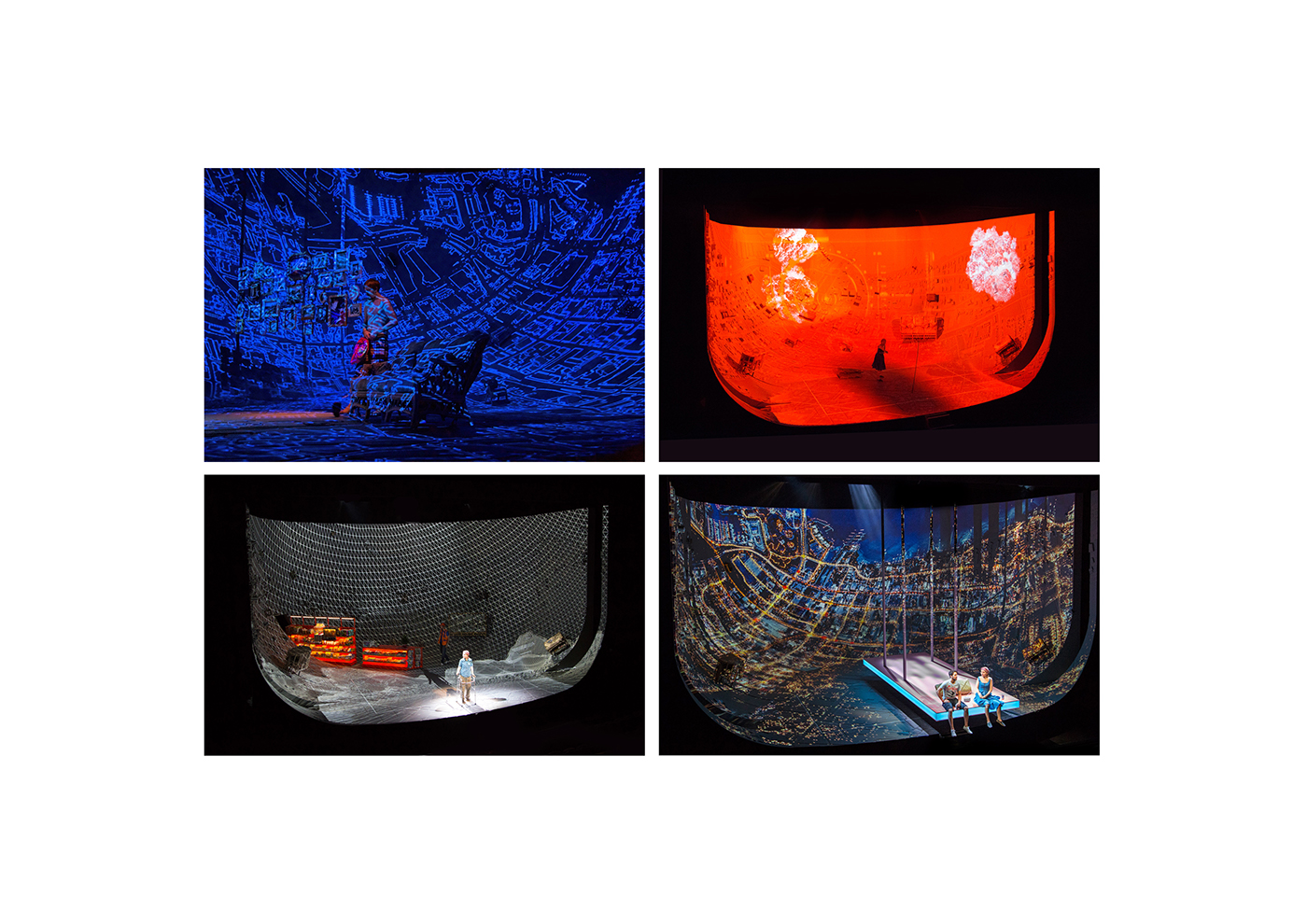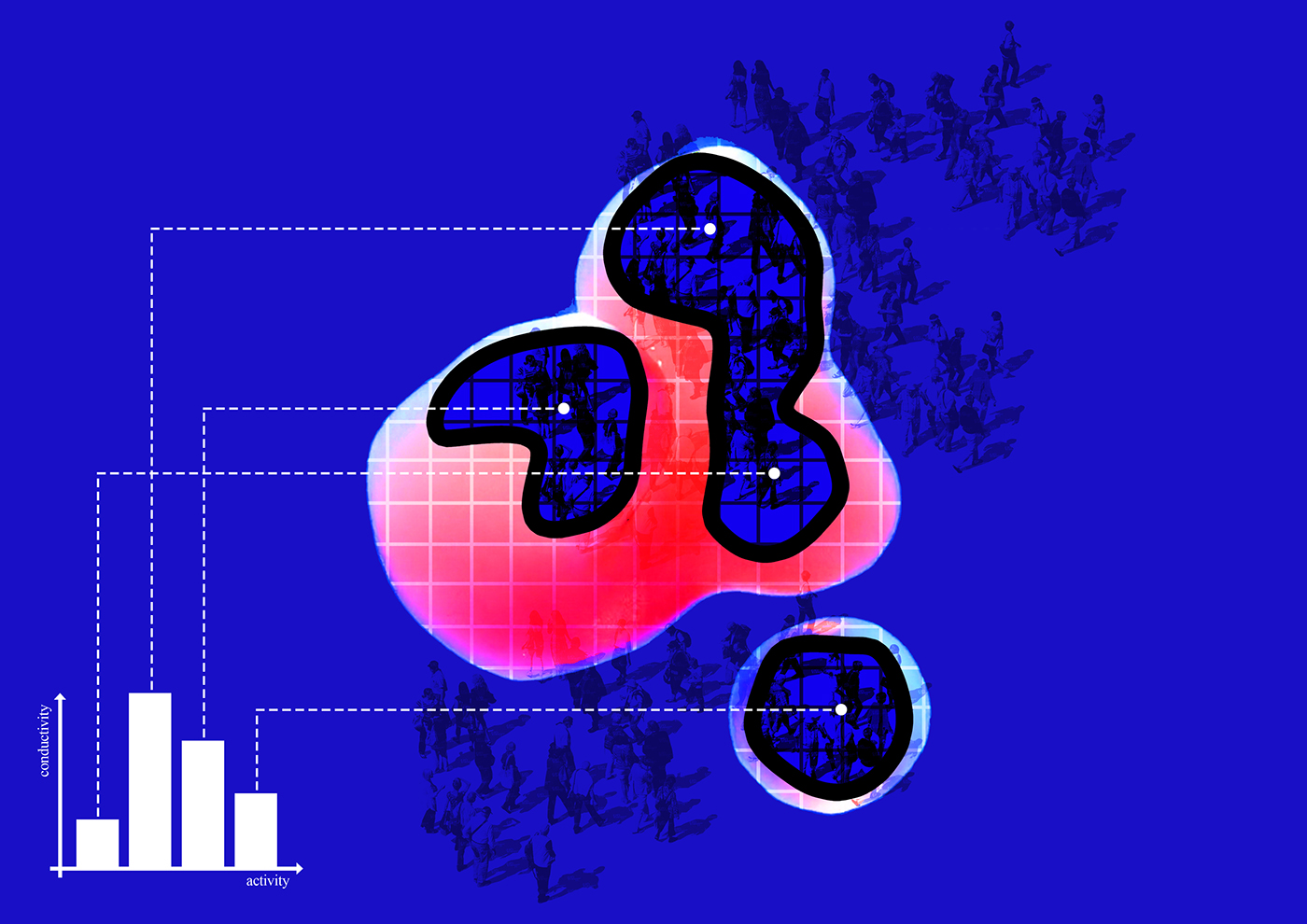My project focused on informal learning, specifically centred around the mechanics by which subcultures expand and contract. My research brought me to realise how the spread of information is an essential building block in education. The theory of memetics and creativity through remix, both imply that information is copied, transformed, and combined, allowing innovation - through the spreading of ideas.
In recent years, the speed at which we expose ourselves to ideas has dramatically increased as a result of innovations affecting the accessibility of information - namely, the internet - as a major contributor to the increased integration of the virtual world within our physical realm. This virtual network facilitates the spreading and evolving of memes. It offers rapid transmission from one person to another and allows us to find people who share the same idea and to reinforce the belief in that meme. The people become “vehicles” for dispersion.

After observing my 12-year-old sister in her free time, I found a discontinuity between her physical and digital interactions. I attributed this to the freedom which people on the internet feel they have due to the physical separation between them. This effective folding of real space created a new boundary however. This psychological boundary, which ironically the virtual system aims to extinguish, shapes the way in which discussion takes place online - producing such an abundance of information that valuable feedback is lost in the irrelevant and the obscure, overshadowed by the radical. An exaggerated version of this new hierarchy of information exists in Jorge Luis Borges’ short story titled the Library of Babel.

This boundary is further enhanced by the virtual funnel which tailored advertising creates. When considering the theories of Deleuze & Guattari, where the say that: “We step out of the world of the actual, the world of common-sense stability, where we function well, by repeating the habits of the day before.” I came to realise that their hypothesis had become outdated. Today the virtual world has become far more efficient than the real in recording our past usage patterns and thus, restricting our future exploration of virtual space. In addition, the virtual realm holds in highest regard that information which can be most easily spread, that which can go viral - a metric which doesn’t necessarily correlate with absolute value. This, I believe, is clearly a result of an increasingly consumerist user base. “A system which has shifted emphasis from the have and have-nots to the digitally facile and digitally obtuse.”

Historically, the physical space has always gradually adapted to past usage - program requirements shift informed by cultural tendencies, in turn causing the evolution of physical tools which support certain programmatic shifts. In contrast, the virtual space is one which, I believe, should draw strength from its temporary nature - allowing instant shifts from one virtual position to another, “where the inhabitant comes and goes - forced to be forever a visitor.” The moment at which the virtual space tries to adhere to past usage patterns is the point at which it’s power collapses - the possible virtual positions becoming increasingly restricted. I propose a system within which the virtual space remains infinitely vast, and the usage patterns being collected in this virtual space will be used to inform the programmatic definition of a malleable physical landscape.

Parallels to this thinking can be drawn with “The Fun Palace [which] was not a building in any conventional sense, but was instead a socially interactive machine, highly adaptable to the shifting cultural and social conditions of its time and place.” (The Fun Palace: Cedric Price) The difference being that since the conception of The Fun Palace, social interaction has become more and more part of the virtual realm. People now exist not only in the physical realm, but also in the knowledge, ideas and know-how they possess, in line with Deleuze’s description of the dividual. Whereas the mechanical Fun Palace was to serve as a prosthetic to the body, this new architecture will serve as prosthetic to the mind. For such a social machine to exist in today’s society, it must be one of constant interchange between the virtual and the physical - effectively folding real and imaginary space - drawing from the strengths of both.


I started to test this proposal by extrapolating the different rules by which our interactions are governed in virtual space: the like, the love, the wow, the post, the share, etc. Which in turn regulate the extent to which we expose ourselves through the process of publicising our interests. I categorised digital interaction in the following:

By this reasoning, the formation of communities online is entirely dependent on the conductivity of an idea - the potential spread of that idea. Just as in the transformation of the city of Akihabara, now densely populated by the Otaku, the virtual realm provides a platform upon which the physical self becomes unrestricted in its anonymity - this freedom arguably projecting a ‘self’ more real than the constrained physical manifestation of one’s actions and emotions. Wellman and Gulia argue that: “there is nothing virtual about virtual reality”, while agreeing that the World Wide Web is yet “another place”, where contact can be maintained, and communities may form.

Professor Sherry Turkle proposes that the Internet is the ideal place to “act out” conflicts. She insists that the virtual space provides a stage upon which people can rehearse their interactions. In contrast, the proposed system would allow the repercussions of these interactions to translate onto the physical space. The spontaneous and temporary nature of a stage-set perhaps is a fitting way to illustrate the way in which ephemeral virtual community could be crystallised in real space.

Up until now the interface between the physical and the virtual has existed in the form of hypersurfaces - “‘Hyper’ implying human agency reconfigured by digital culture.” I believe that we are experiencing the evolution of hypersurfaces - made possible by the increased bandwidth between our virtual self and volumetric space. Essentially, the beginning of an architecture dealing with hypervolumes, which could pave the way to new intensities of culture and intersubjectivity.

This thinking will translate into a physical system in which the conductivity of an idea informs the scale and atmosphere of a physical sp.ace. This new system would map virtual interests - tagging each cluster of ideas with their corresponding spatial coordinates. The resultant density of people in each new physical space will cause growth of an activity through the over-spill of program - transforming space as each event outlives its purpose. Similar to the Blur building of the 2002 Swiss Expo, which inhabited the virtual space of the internet as it simultaneously occupied the physical space over Lake Neuchatel, “with its virtual and actual visitors occupying multiple positions, in the manifold of virtual instantiations of the space, projected around the globe through the internet.”



Deprived of touch, sight, proximity, gesture, body language and other forms of nonverbal communication while on the Internet, it seems that we are destined to live in a world where relationships are determined by digits. I question whether that is enough to bridge the void of distance, the lack of personal contact, and initial mistrust? I concluded that the virtual and the physical are not mutual - but interlinked and interdependent - since the physical maintains its relevance as a platform for expression due to the ubiquity of the virtual.


